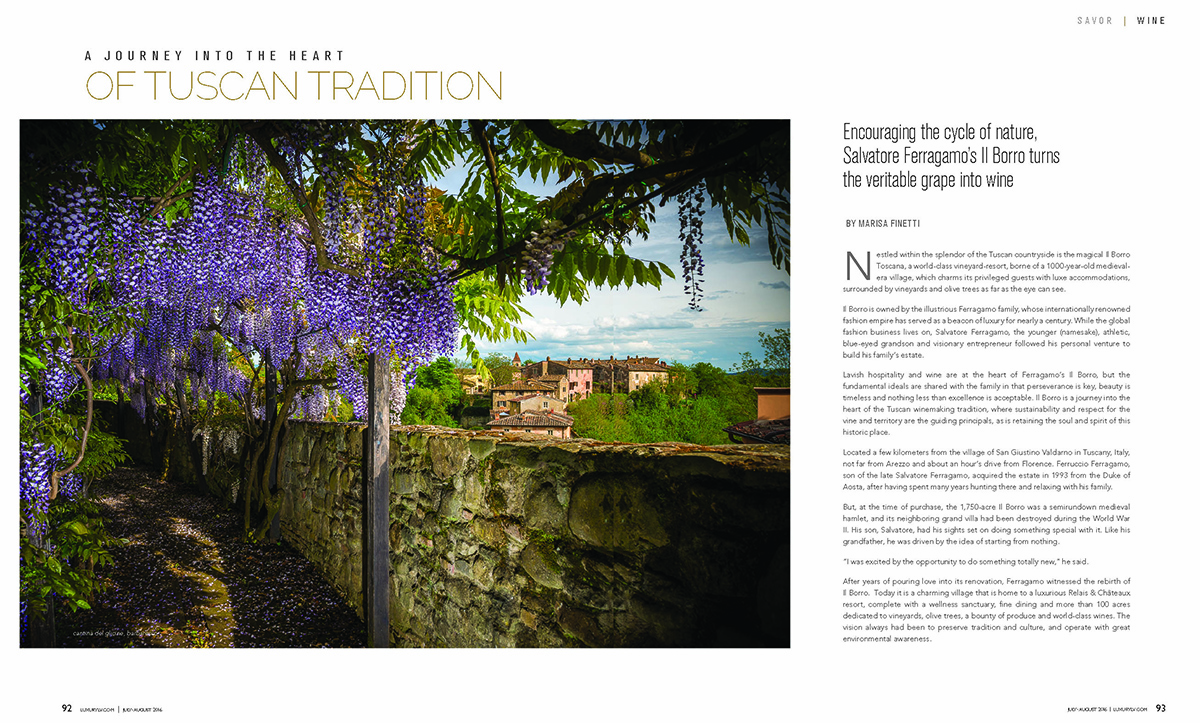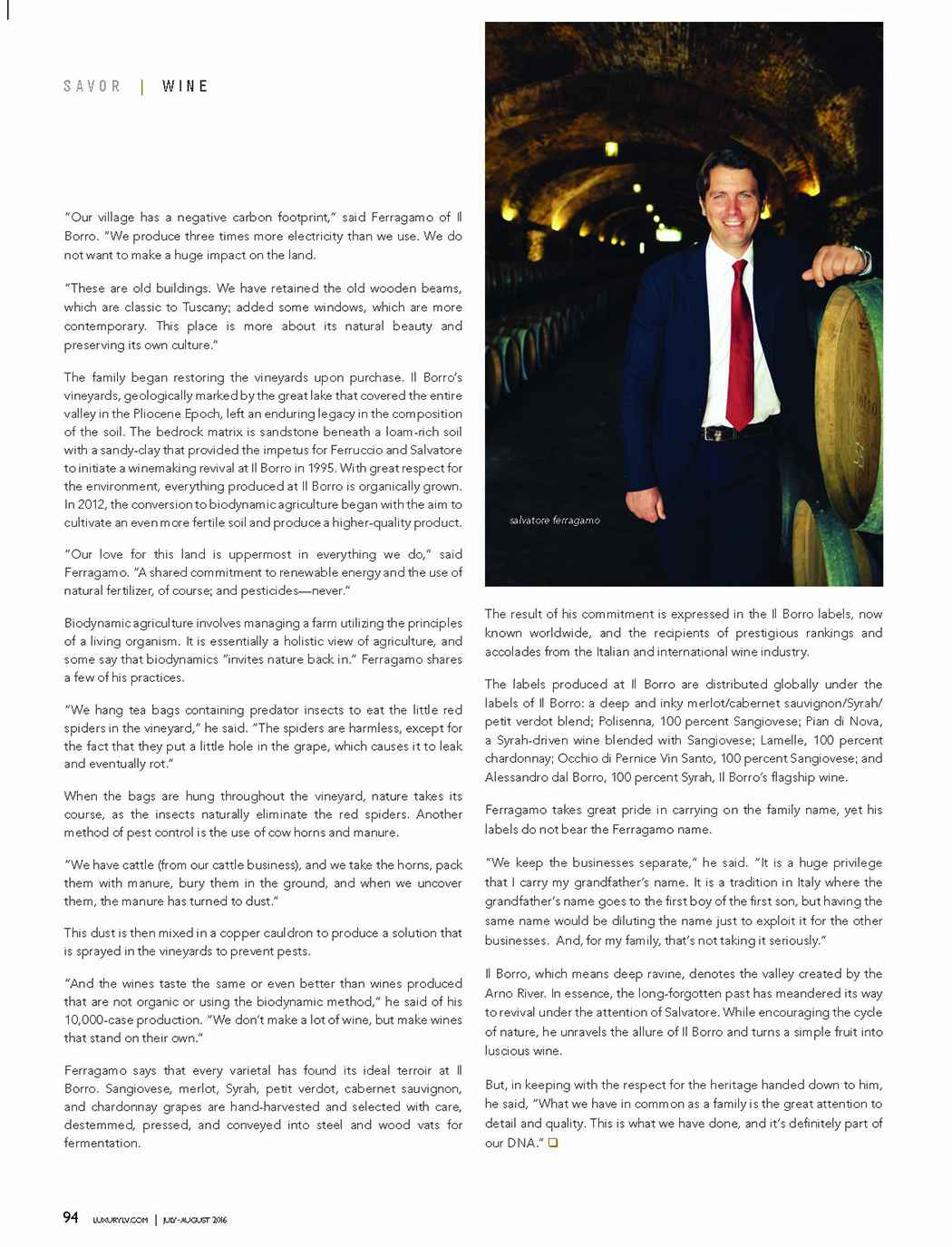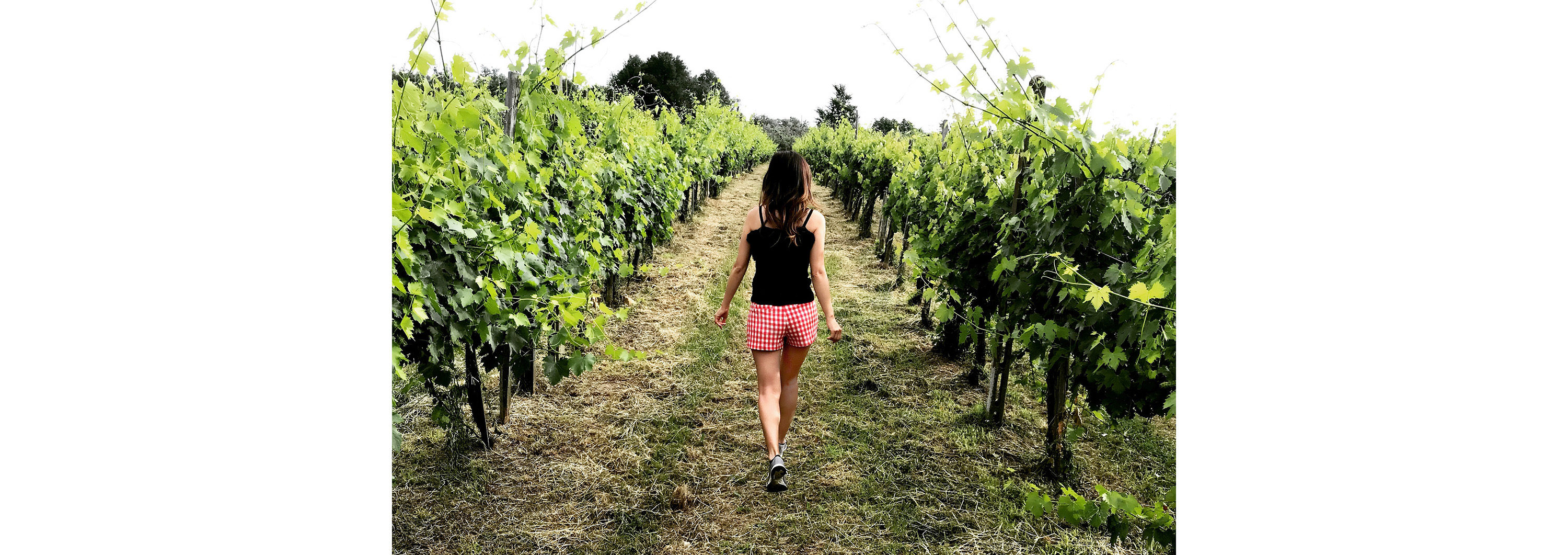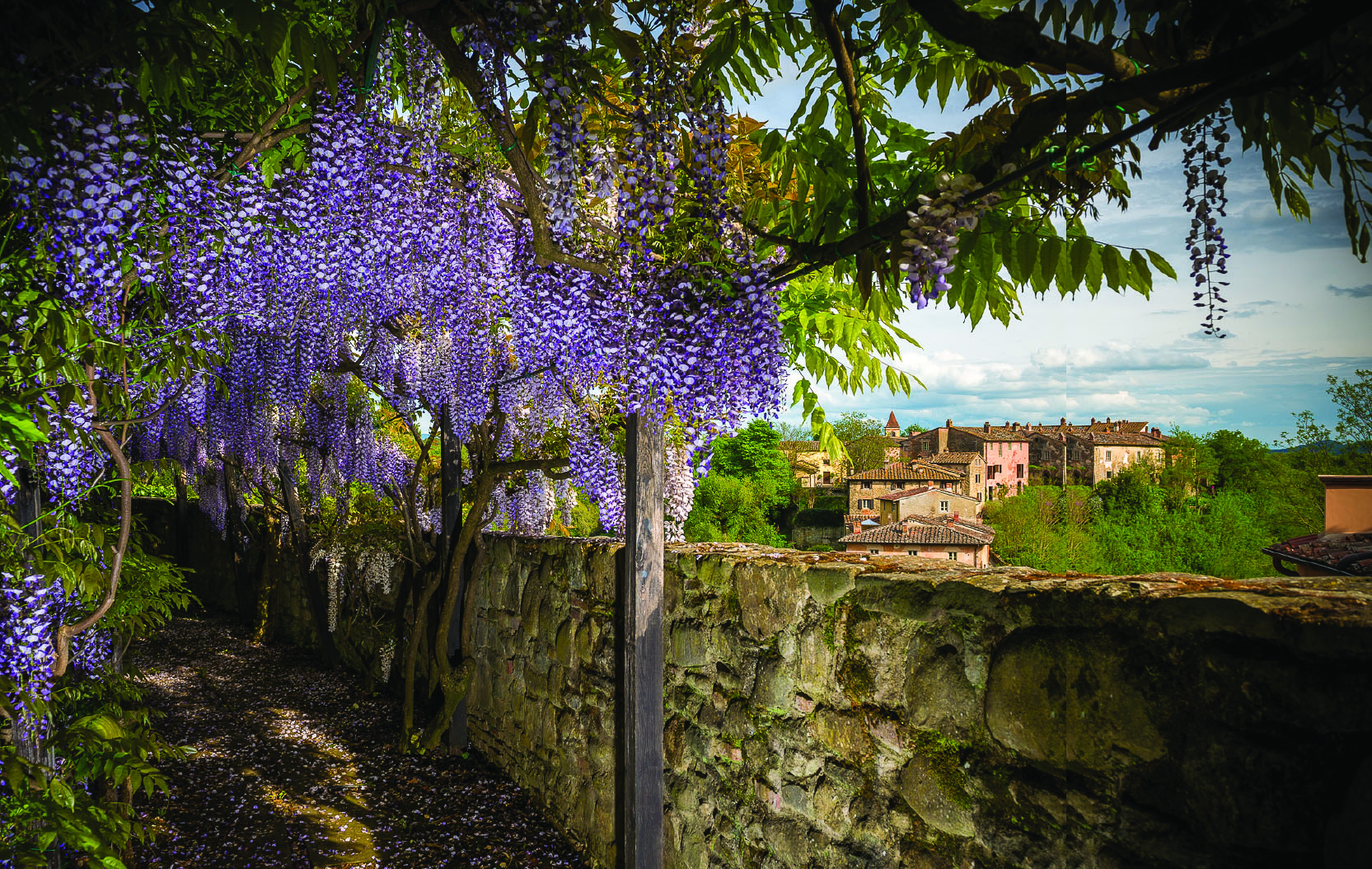Tucked between landscapes that resemble da Vinci’s sketches and the vivid vistas of Giovanni Fattori’s paintings, Il Borro comes alive in motion. We took an all-terrain ride through the rolling Tuscan hills, vineyards, and medieval village, discovering a place where nature, wine, and heritage exist in perfect harmony. Rooted in a 1,000-year-old medieval-era village, the estate is devoted to fine wine and hospitality, guided by sustainability and environmental stewardship.
Il Borro is owned by the illustrious Ferragamo family, whose internationally-renowned fashion empire has served as a beacon of luxury for nearly a century. While the global fashion business lives on, Salvatore Ferragamo, the younger (namesake), athletic, blue-eyed grandson and visionary entrepreneur, followed his personal venture to nurture the land and craft an estate that respects both tradition and the natural world.
Upon arriving at his estate, the aesthetic leans toward lavish hospitality, but the heart of Il Borro is centered on Tuscan winemaking tradition, where respect for the vine and the land is paramount, and the cycle of nature itself shapes its vineyards, gardens, and village life.
Located a few kilometers from the village of San Giustino Valdarno in Tuscany, Italy, not far from Arezzo and about an hour’s drive from Florence, Ferruccio Ferragamo, son of the late Salvatore Ferragamo, spent many years hunting here and observing the land.
At the time of purchase in 1993 from the Duke of Aosta, the 1,750-acre Il Borro was a semi-rundown medieval hamlet, and its neighboring grand villa had been destroyed during World War II. His son, Salvatore, saw an opportunity not just to restore the village but to reimagine it as a sustainable estate where agriculture, energy, and architecture worked in harmony with nature. Like his grandfather, he was driven by the idea of starting from nothing.
“I was excited by the opportunity to do something totally new,” he said.
Over the years, the Ferragamo family nvested deeply in both environmental and cultural restoration, transforming Il Borro into a vibrant, living village. Today, the estate spans 1,100 hectares, including 85 hectares of organically managed vineyards and roughly 30 hectares of olive groves, all cultivated to enhance soil fertility and biodiversity. Sustainability is woven into every aspect of the estate, from renewable energy systems to soil management, thoughtful vineyard practices, and organic gardens, with free‑range chickens reinforcing a strong ‘from‑farm‑to‑table’ ethos.
“Our village has a negative carbon footprint,” said Ferragamo. “We produce three times more electricity than we use. We have retained the old wooden beams, which are characteristic of Tuscany, and added some contemporary windows. This place is also about its natural beauty and preserving its own culture.”
The family began restoring the vineyards upon purchase, mindful not only of tradition but also of the land’s natural vitality. Il Borro’s vineyards, geologically marked by the great lake that covered the entire valley in the Pliocene Epoch, left an enduring legacy in the composition of the soil. The bedrock matrix is sandstone beneath a loam-rich soil with a sandy-clay layer that provided the impetus for Ferruccio and Salvatore to initiate a winemaking revival at Il Borro in 1995. With deep respect for the environment, everything produced at Il Borro is grown organically, and in 2015, the estate achieved full organic certification. In 2012, the conversion to biodynamic agriculture commenced to cultivate even more fertile soil and produce a higher-quality product.
“Our love for this land is uppermost in everything we do,” said Ferragamo. “A shared commitment to renewable energy and the use of natural fertilizer, of course; and pesticides—never.”
Biodynamic agriculture involves managing a farm utilizing the principles of a living organism. It is essentially a holistic view of agriculture, and some say that biodynamics “invites nature back in.” Ferragamo shares a few of his practices.
“We hang tea bags containing predator insects to eat the little red spiders in the vineyard,” he said. “The spiders are harmless, except for the fact that they put a little hole in the grape, which causes it to leak and eventually rot.”
When the bags are hung throughout the vineyard, nature takes its course, as the insects naturally eliminate the red spiders. Another method of pest control is the use of cow horns and manure.
“We have cattle (from our cattle business), and we take the horns, pack them with manure, bury them in the ground, and when we uncover them, the manure has turned to dust.”
This dust is then mixed in a copper cauldron to produce a solution that is sprayed in the vineyards to prevent pests.
Sangiovese, Merlot, Syrah, Petit Verdot, Cabernet Sauvignon, and Chardonnay grapes are hand-harvested and carefully selected, then de-stemmed, pressed, and transferred into steel and wood vats for fermentation. Sustainability and attention to soil health guide every step of production, ensuring that both vine and fruit are treated with respect.
The result of his commitment is reflected in the Il Borro labels, now recognized worldwide, recipients of prestigious rankings and accolades from the Italian and international wine industries. Today, the estate produces approximately 450,000 bottles per year, all estate-grown and organically certified, with exports to over 50 countries. The Ferragamo family expanded their portfolio in 2024 through the acquisition of Tenuta Pinino in Montalcino, adding Brunello di Montalcino to their wine offerings.
All this, yet Ferragamo takes great pride in carrying on the family name, which do not appear on his labels.
“We keep the businesses separate,” he said. “It is a huge privilege that I carry my grandfather’s name. It is a tradition in Italy where the grandfather’s name goes to the first boy of the first son, but having the same name would be diluting the name just to exploit it for the other businesses. And, for my family, that’s not taking it seriously.”
But, in keeping with the respect for the heritage handed down to him, he said, “What we have in common as a family is the great attention to detail and quality. This is what we have done, and it’s definitely part of our DNA.”
Photos | Courtesy of Il Borro
This story was re-written in October, 2025
Originally published in LUXURY Magazine – Las Vegas Review Journal



